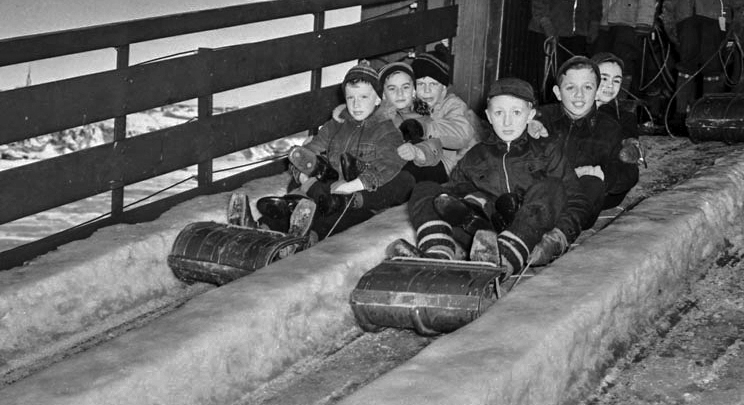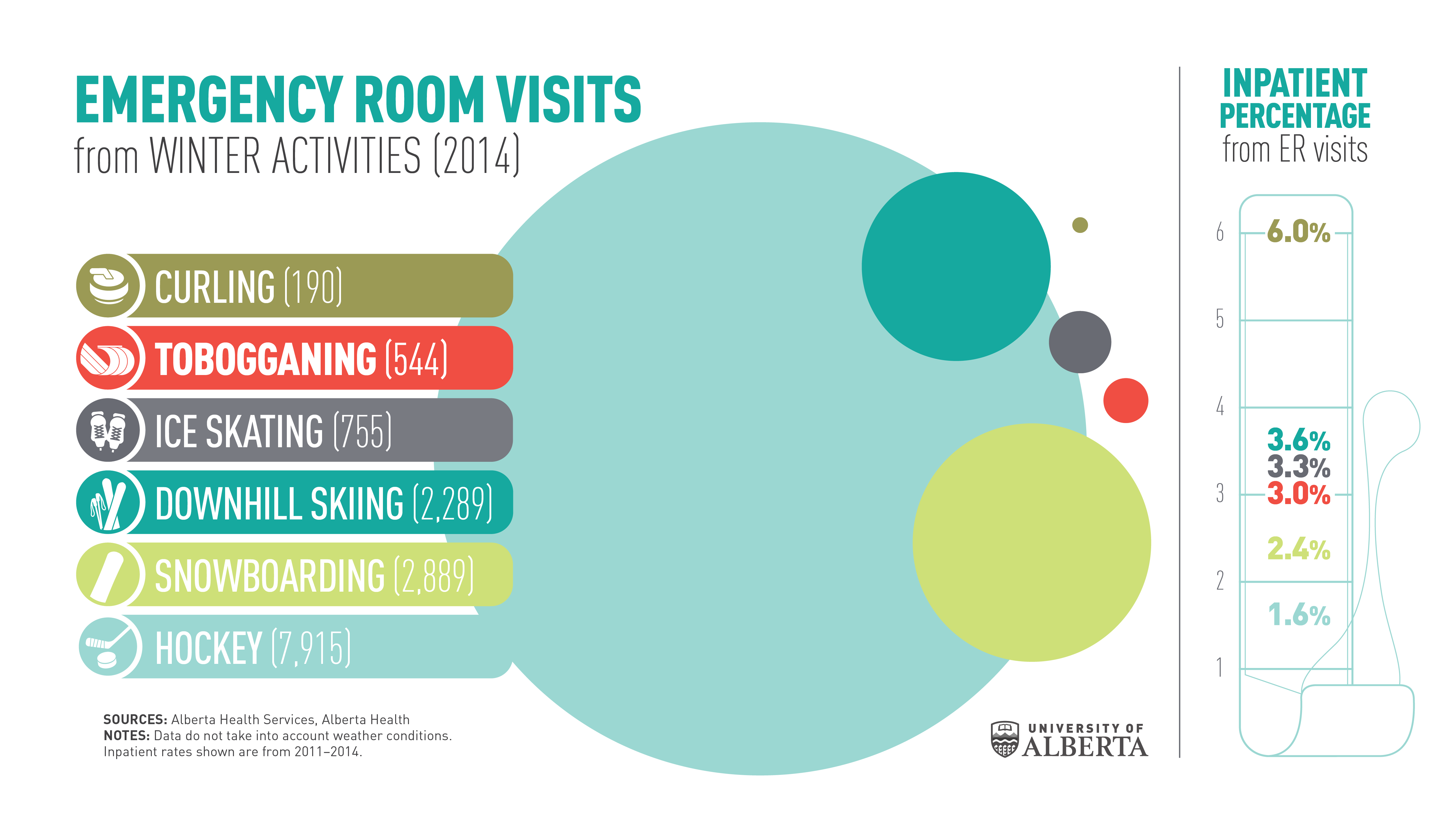
It might be the quintessential Canadian winter pastime - it's actually been around since before Confederation - but lately, trouble has been swirling on snow hills across the nation as municipalities move to ban tobogganing.
Last month, the town of Jasper banned sledding on two popular local hills, joining cities such as Calgary and Hamilton that have enacted similar restrictions in city-owned spaces.
Edmonton has no ban. In fact, it provides a handy guide that tells its citizens when the conditions are right to head to the hills. And according to a University of Alberta public health expert, the numbers support that policy.
Don Voaklander, '88 BPE, '94 PhD, director of the Injury Prevention Centre, points to recent data from Alberta hospitals showing that tobogganing landed far fewer people in the emergency room than other popular winter activities such as ice hockey, downhill skiing and snowboarding. And only three per cent of those people who did visit the ER with tobogganing-related ailments ended up in an inpatient bed.
"It's not nearly as bad as skiing or curling. … It's because people do headers on the ice. If you get an injury, the curling injury is going to be more severe." - Don Voaklander
"It's not nearly as bad as skiing or curling," says Voaklander, noting that curling may cause fewer ER visits than tobogganing but is twice as likely to cause a hospital stay. "It's because people do headers on the ice. If you get an injury, the curling injury is going to be more severe."
Voaklander's previous research showed that the most common sledding injuries - fractures, bruises and sprains - are potentially serious but preventable if parents take precautions.
"The take-home message here is that it's good that parents know the risks. If your kid's going sledding, throw a helmet on their head - it doesn't have to be a ski-rated helmet; it could be a bicycle helmet, a hockey helmet. Any helmet is better than no helmet."
So what's behind the move to ban tobogganing while curling and hockey continue unchecked? It's likely more about covering butts than protecting them, Voaklander says.
"[Municipalities] are trying to reduce their insurance rates. There have been some high-profile lawsuits in Canada, particularly from adults who've been injured. If you talk to any municipality in the country, they'll say it's getting harder and harder to get moderate-cost insurance to cover recreational activities."
Nevertheless, Voaklander is unconvinced that municipal bans are effective at preventing lawsuits or injuries. "You can ban it, but it's like signing a waiver. You can sign a waiver and still sue somebody."
Voaklander said he wouldn't want to see kids miss out on the health and social benefits of tobogganing just because the risks have been blown out of proportion.
"I think it's a good idea that people are mindful of the risks, but I don't think we should regulate it," he says. "Kids these days get so much structured activity. There's a whole movement right now suggesting that we're losing something in society by not exposing kids to more free play. This is one of the last things they can do that falls under that umbrella. And there's a low cost of entry - it's not hockey, it's not gymnastics. You can do it on cardboard and have as much fun as everybody else."
Emergency room visits from winter activities, 2014

Sources: Alberta Health Services, Alberta Health
(Note: Data does not take into account weather conditions. Inpatient rates shown are from 2011-2014.)
Safe Sledding Tips
- Wear a helmet. Bicycle, ski or hockey - any helmet is better than no helmet.
- Walk before you slide. Check the run for trees, fences, signposts or rocks hidden by snow.
- Remember the runout. Roads, rivers or ponds can be closer than they appear from the top of the hill.
- Slide down the middle, walk up the sides. And get out of the way quickly when you reach the bottom.
- Feet first, not head first. Sitting with your feet in front can help prevent spine and head injuries.
- Don't slide in the dark. Make sure there's good lighting at night.
- Don't drink and sled. Save it for the hot chocolate afterward.
- Don't overestimate your ability. Don't go to the top when everyone else is starting halfway down.
(Sources: Don Voaklander; Parachute Canada)
Get outside
Throughout the year, UAlberta's Outdoor Recreation program offers students, staff, alumni and community members affordable, high-quality and inclusive opportunities to explore Alberta through various trips and outdoor adventures.
We at New Trail welcome your comments. Robust debate and criticism are encouraged, provided it is respectful. We reserve the right to reject comments, images or links that attack ethnicity, nationality, religion, gender or sexual orientation; that include offensive language, threats, spam; are fraudulent or defamatory; infringe on copyright or trademarks; and that just generally aren’t very nice. Discussion is monitored and violation of these guidelines will result in comments being disabled.